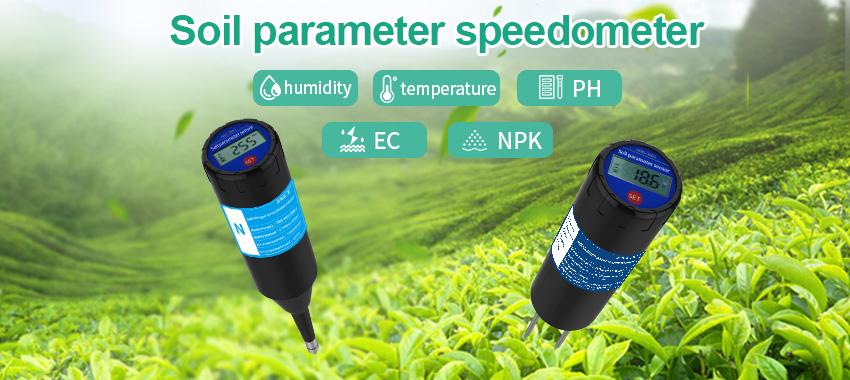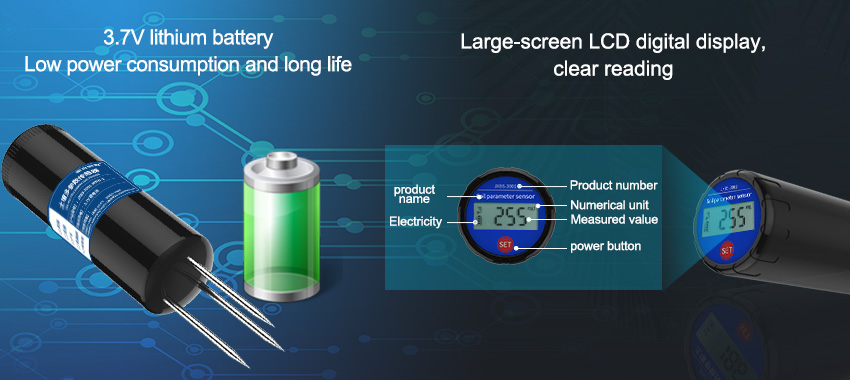Agriculture is a vital industry that sustains human life by providing food, fiber, and raw materials. To meet the growing global demand for agricultural products, it is crucial to maximize productivity while minimizing environmental impact. One technology that holds great promise in achieving this balance is soil sensors. In this article, we will explore how soil sensors can enhance agricultural productivity by providing valuable insights into soil conditions, optimizing fertilizer and water usage, and enabling precision farming techniques.
Understanding Soil Conditions:
Soil health is a key determinant of crop growth and productivity. Soil sensors provide real-time data on important parameters such as moisture content, temperature, nutrient levels, and pH. By monitoring these variables, farmers can gain a deeper understanding of soil conditions and make informed decisions about crop selection, irrigation scheduling, and nutrient management.
For example, soil moisture sensors can help farmers determine the optimal time for irrigation, preventing under or over-watering. This not only conserves water but also ensures that crops receive the right amount of moisture for optimal growth. Similarly, nutrient sensors can provide insights into the availability of essential elements in the soil, allowing farmers to adjust fertilizer applications based on actual crop needs. This targeted approach reduces the risk of nutrient imbalance, improves nutrient uptake efficiency, and minimizes environmental pollution.
Precision Agriculture and Yield Optimization:
Precision agriculture is a farming approach that utilizes advanced technologies, such as soil sensors, to optimize farming practices at a micro-scale level. By incorporating soil sensors into precision agriculture systems, farmers can tailor their actions based on specific soil conditions in different areas of their fields.
Soil sensors can be used to create soil maps, which highlight variations in soil characteristics across the farm. Armed with this knowledge, farmers can implement site-specific management strategies, such as variable rate fertilization, that account for soil heterogeneity. This approach ensures that crops receive the right amount of nutrients in each area, leading to improved yield and reduced input waste.
Furthermore, soil sensors can help identify areas with poor soil quality or specific nutrient deficiencies. By detecting these issues early on, farmers can take remedial actions such as soil amendment, crop rotation, or targeted fertilization to rectify the problem before it affects crop performance. This proactive approach minimizes yield loss and enhances overall productivity.

Water Management and Conservation:
Water scarcity is a significant challenge in many agricultural regions. Efficient water management is crucial for sustainable farming practices and to ensure that water resources are used judiciously. Soil sensors play a critical role in optimizing irrigation scheduling and conserving water.
By continuously monitoring soil moisture levels with soil sensors, farmers can determine when and how much water to apply. Instead of relying on fixed irrigation schedules, which may not accurately reflect actual crop water needs, farmers can adapt their watering regimes based on real-time soil moisture data. This precision irrigation approach reduces water waste, ensures that crops receive sufficient moisture, and minimizes the risk of water stress.

Furthermore, soil sensors can help identify areas of excessive water retention or poor drainage. By pinpointing these problem areas, farmers can implement drainage measures or adjust irrigation practices accordingly. This not only improves crop health and productivity but also prevents waterlogging and soil erosion.
Early Detection of Soil Degradation:
Soil degradation is a global concern that poses a significant threat to agricultural productivity and environmental sustainability. Soil sensors can play a crucial role in early detection and prevention of soil degradation processes.
For example, soil sensors can monitor soil compaction, which occurs when the soil becomes too tightly packed, limiting root growth and nutrient uptake. By detecting compaction early on, farmers can implement appropriate measures such as deep tillage or cover cropping to alleviate the problem and maintain soil health.
Similarly, soil sensors can detect salinity, a condition that occurs when excessive salts accumulate in the soil. High soil salinity can be detrimental to crop growth and productivity. By continuously monitoring soil salinity levels, farmers can take corrective actions such as leaching the soil with freshwater or adjusting irrigation practices to maintain optimal salinity levels for crop growth.
Integration with Data Analytics and Decision Support Systems:
The power of soil sensors extends beyond collecting data; it lies in their integration with data analytics and decision support systems. By combini







